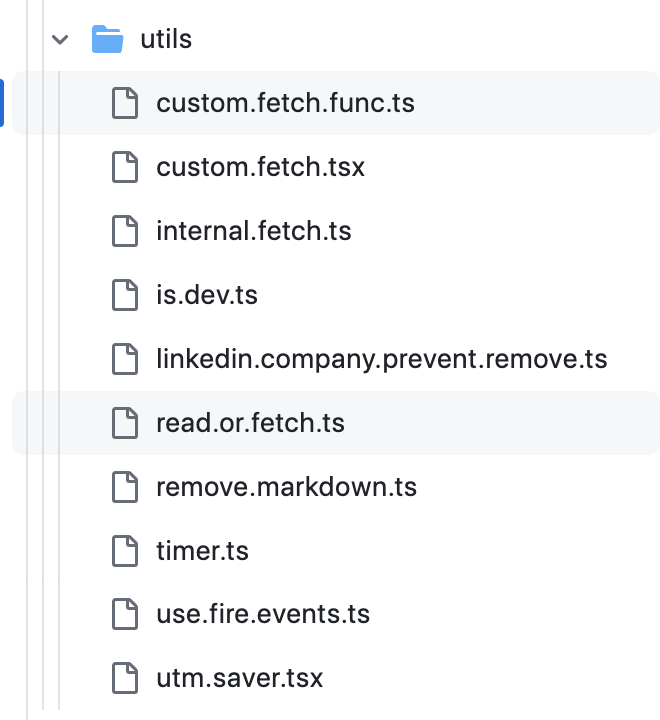Using a custom backend server with Next.js in a monorepo.
 Ramu Narasinga
Ramu Narasinga
I was searching for an open source repository that schedules and posts on social media. I found Gitroom.
Gitroom is a awesome, built by Nevo David. You can 📨 schedule social media and articles. Exchange or buy posts from other members 👨🏻💻. Monitor your GitHub trending, and so much more 📈.
The following are some interesting things I learnt from this repository
1. You can use your own backend with Next.js 2. A note about customFetch 3. The way the files are named.
1. You can use your own backend with Next.js
Gitroom uses the following tech stack:
NX (Monorepo)
NextJS (React)
NestJS
Prisma (Default to PostgreSQL)
Redis
Resend (emails notifications)
It has folders named as frontend, backend, cron etc.,
I wondered for quite some time now, if we could use our own backend when you are already using the Next.js, a “full stack” react framework but, I kept seeing people advising to use your custom backend when you need advanced features like cron, web sockets etc., on Reddit. Now that I found Gitroom that demonstrates the custom backend usage along with Next.js and cron, I have a good feeling that you could learn some advanced patterns studying this repository.
2. A note about customFetch
The following code snippet is picked from apps/frontend/src/app/(site)/settings/page.tsx#L21
if (searchParams.code) {
await internalFetch('/settings/github', {
method: 'POST',
body: JSON.stringify({ code: searchParams.code }),
});
return redirect('/settings', RedirectType.replace);
}
‘internalFetch’ uses customFetch.
The below code snippet is picked from libraries/helpers/src/utils/custom.fetch.func.ts
export const customFetch = (
params: Params,
auth?: string,
showorg?: string
) => {
return async function newFetch(url: string, options: RequestInit = {}) {
const newRequestObject = await params?.beforeRequest?.(url, options);
const fetchRequest = await fetch(params.baseUrl + url, {
credentials: 'include',
…(newRequestObject || options),
headers: {
…(auth ? { auth } : {}),
…(showorg ? { showorg } : {}),
…(options.body instanceof FormData
? {}
: { 'Content-Type': 'application/json' }),
Accept: 'application/json',
…options?.headers,
},
// @ts-ignore
…(!options.next && options.cache !== 'force-cache'
? { cache: options.cache || 'no-store' }
: {}),
});
if (
!params?.afterRequest ||
(await params?.afterRequest?.(url, options, fetchRequest))
) {
return fetchRequest;
}
// @ts-ignore
return new Promise((res) => {}) as Response;
};
};
Why???, I don’t know the answer yet but, I can tell there is “beforeRequest” and “afterRequest” processing happening based on the above code snippet
3. The way the files are named.
I have never seen a service file named using dots like “custom.fetch.func.ts”. Sure, there’s config files named as tailwind.config.ts etc.,
Here’s what chatGPT has to say about this: “ This kind of naming does not fit into a traditional case style like snake_case, kebab-case, or camelCase.
However, if we ignore the file extension (“.ts”) and consider only “custom.fetch.func,” it can be seen as:
Dot notation: This isn’t a standard case style but is sometimes used in programming to represent a hierarchical relationship or to namespace parts of a name. “
To be honest, choose w/e naming conventions work for you. I use lowercase words separated by dashes as a file name, like custom-fetch-func.ts
Want to learn how to build shadcn-ui/ui from scratch? Check out build-from-scratch
About me:
Website: https://ramunarasinga.com/
Linkedin: https://www.linkedin.com/in/ramu-narasinga-189361128/
Github: https://github.com/Ramu-Narasinga
Email: ramu.narasinga@gmail.com
Build shadcn-ui/ui from scratch
Resources:
Subscribe to my newsletter
Read articles from Ramu Narasinga directly inside your inbox. Subscribe to the newsletter, and don't miss out.
Written by


